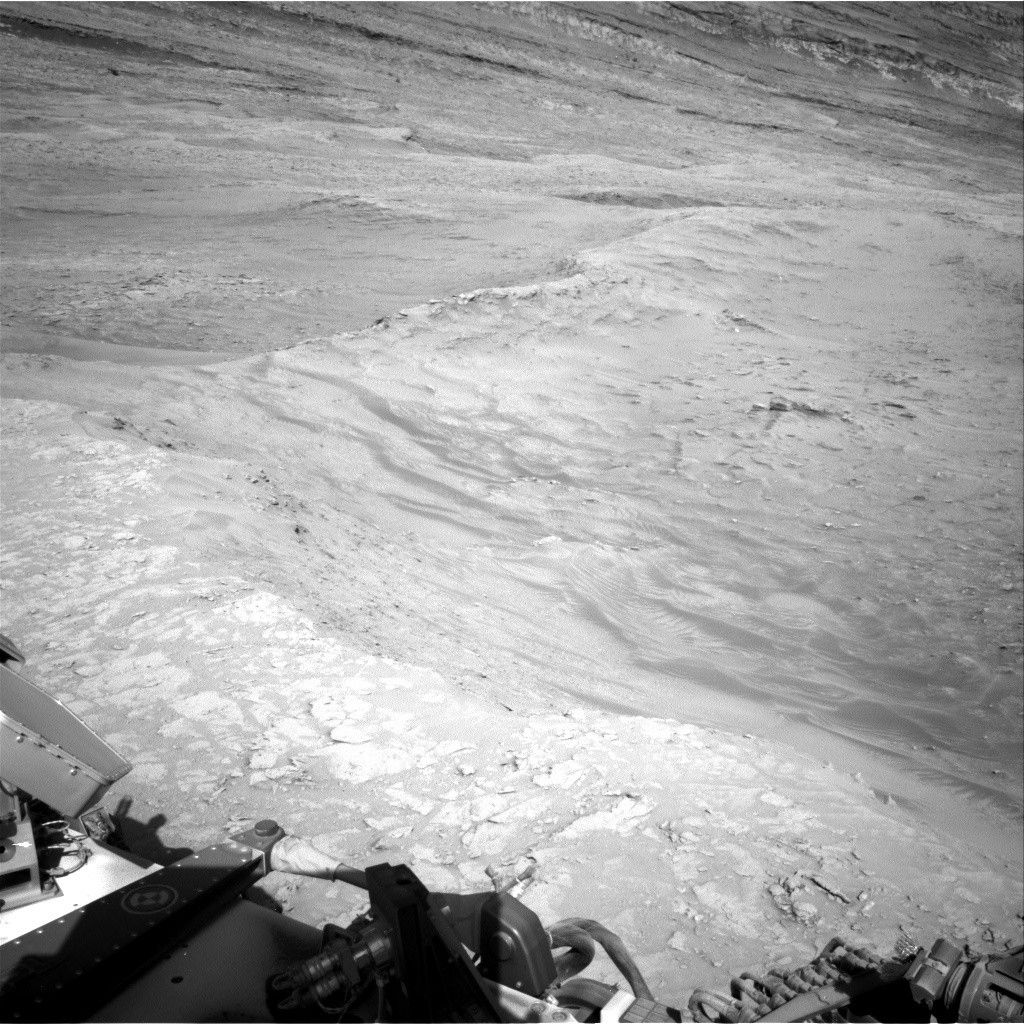- Curiosity Home
- Science
- News and Features
- Multimedia
- Mars Missions
- Mars Home
2 min read

Written by Lucy Lim, Planetary Scientist at NASA's Goddard Space Flight Center
Earth planning date: Friday, July 25, 2025
A 23-meter drive (about 75 feet) brought Curiosity to today's planned "look-about" spot. The highlight of the plan will be the 360-degree Mastcam panorama that will document the ridge-and-hollow topography of the boxwork-forming unit we've been exploring, in addition to overlying stratigraphy in some of the nearby buttes. The right-angle ridge pattern is quite prominent in the HiRISE orbital imaging, which enabled us to plan for this stop. It has been 70 sols since the last panorama and the rover has driven quite some distance in that time!
Additional detailed imaging was planned with the ChemCam remote imager (RMI) and Mastcam high-resolution M100: mosaics will cover the exposed strata underneath the ridge we're planning to drive on ("Arequipa Airport"), two linear fractures, one parallel to the large ridge and one cross-cutting it ("Laguna de Salinas" and "Laguna Santa Rosa"), some troughs around a nearby light-toned float block ("Arubai"), and the Uyuni butte in the middle distance.
The bedrock texture here was a noticeable change from the previous workspace, with a knobbly oriented texture interspersed occasionally with platier exposures. Geochemical measurements were planned with the ChemCam LIBS to complement the auto-targeted post-drive AEGIS measurement: "La Coca" on a block that appeared to show unusual colors, and "El Algodón" on a knobbly textured chunk of bedrock. APXS geochemistry was planned with dust removal on the "Yura Tuff" knobbly target and without dust removal on the "Tipnis" target. MAHLI will also provide close-up imaging on the two APXS targets.
For the modern Martian environment, it's still the cloudy season at Gale so we are planning several cloud-related activities. The Mastcam sky survey will measure abundances of atmospheric dust and water ice, whereas a special cloud altitude observation will include video of clouds and their shadows so that the altitudes and velocities of the clouds and related winds can be calculated. A separate short movie will search for dust lifting (dust devil) activity. Finally, the usual passive REMS and DAN observations will monitor the temperature, humidity, and neutron environment at Curiosity's current location.






